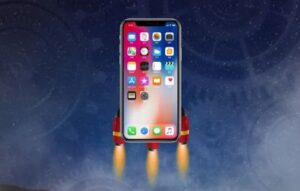Animation and Greek mythology
The Greek mythology It is a recurring source in animation, blending ancient traditions with modern techniques to captivate audiences. These stories allow timeless myths to be revived.
Many animated productions stand out for incorporating classical gods, heroes, and creatures as the basis for exciting and educational narratives, connecting audiences with Greek culture.
Featured films: “Patti and the Fury of Poseidon”
“Patti and the Fury of Poseidon” stands out as an independent animated film that broke records in France, showcasing an epic adventure in ancient Greece. Its protagonist is Patti, a super-intelligent young mouse.
Directed by David Alaux, this film integrates gods like Poseidon and Zeus, as well as mythological creatures like the Cyclopes, combining classical elements with charming animal characters.
The story revolves around saving the city of Iolcos from destruction, showing how mythology can be adapted for a family audience while maintaining the essence of Greek myths.
Influence of Disney and anime series
Disney popularized Greek mythology in animation with its film Hercules, which combines a vibrant style and humor to introduce new generations to these myths.
In addition, anime includes numerous series that explore Greek themes and characters, integrating myths into modern contexts and offering fresh and dynamic versions for viewers.
These influences demonstrate animation's ability to keep mythological stories alive, ensuring they remain relevant and appealing in today's popular culture.
Norse mythology in animated productions
The Norse mythology It offers a fascinating world of gods and creatures that have inspired numerous animated productions worldwide. Its rich culture makes it ideal for visual storytelling.
Recent animations explore these legends and characters, bringing to life stories that blend adventure, mystery, and supernatural elements characteristic of this mythology.
Main gods and mythological figures
The most well-known gods in Norse mythology include Odin, the wise father of all, Thor, god of thunder, and LokiThe deceitful trickster. These are figures that dominate a large part of the stories.
In addition, figures like the wolf Fenrirthe hero Sigurd and the snake Jormungandr They add depth and variety to these legends, embellishing the narrative with symbolism and eternal conflicts.
These characters represent powerful concepts such as destiny, strength, and chaos, and are an essential part of myths that explore the end of the world, known as Ragnarök.
Examples of anime with Nordic elements
Some recent anime incorporate Nordic elements into their plots, mixing them with other mythologies to create varied and complex universes that appeal to different audiences.
Productions like Kamigami no Asobi They feature characters based on Norse gods, integrating them into school stories with modern interactions and personal conflicts.
Besides, High School DxD It uses gods and creatures from this mythology to enrich its plot, combining action and fantasy in contemporary and mythological contexts.
Japanese mythology in animation
The Japanese mythology It is fundamental in many animated productions, especially those made by Studio Ghibli, which are known for integrating its elements into captivating stories.
These narratives explore the presence of kami, oni, and youkai, essential figures that reflect traditional Japanese beliefs, and allow the culture to be transmitted visually and symbolically.
The role of Studio Ghibli and mythological concepts
The Studio Ghibli They are pioneers in animation that incorporates concepts from Japanese mythology, addressing themes such as the connection between humans and spirits in a world full of symbolism.
Films like Spirited Away exemplify the use of mythology, presenting spirits and deities that converge with everyday life, showcasing deeply rooted values and traditions.
In addition, Ghibli uses elements such as oni and youkai to create mysterious and fantastic atmospheres that enrich the emotional and cultural experience of the viewer.
His approach combines respect for tradition with originality in animation, creating works that are both a tribute to mythology and a window into its contemporary reinterpretation.
Contemporary importance of animated mythology
Mythology-based animation continues to be relevant by connecting ancient cultures with modern audiences through engaging and immersive visual narratives.
These adaptations allow us to preserve traditions, generate appreciation for cultural heritage, and revitalize ancient stories with a contemporary and universal perspective.
Cultural impact and current popularity
Animated productions that incorporate mythologies influence popular culture, reinforcing collective identity and expanding access to classical sources in an entertaining way.
The popularity of these stories does not wane, as they communicate universal values and archetypes that continue to resonate strongly with global audiences of all ages.
Furthermore, these works foster an interest in history and culture, serving as an educational bridge that combines entertainment with learning.
Universal themes in animated mythologies
Themes such as heroism, the struggle between good and evil, destiny, and personal transformation are recurrent and easily adapted to different cultural contexts.
These timeless questions allow mythological stories to remain relevant and serve as a mirror to explore human dilemmas in novel and exciting ways.
Animation enhances the representation of these themes through symbolic images, facilitating a deep emotional connection with the viewer.






